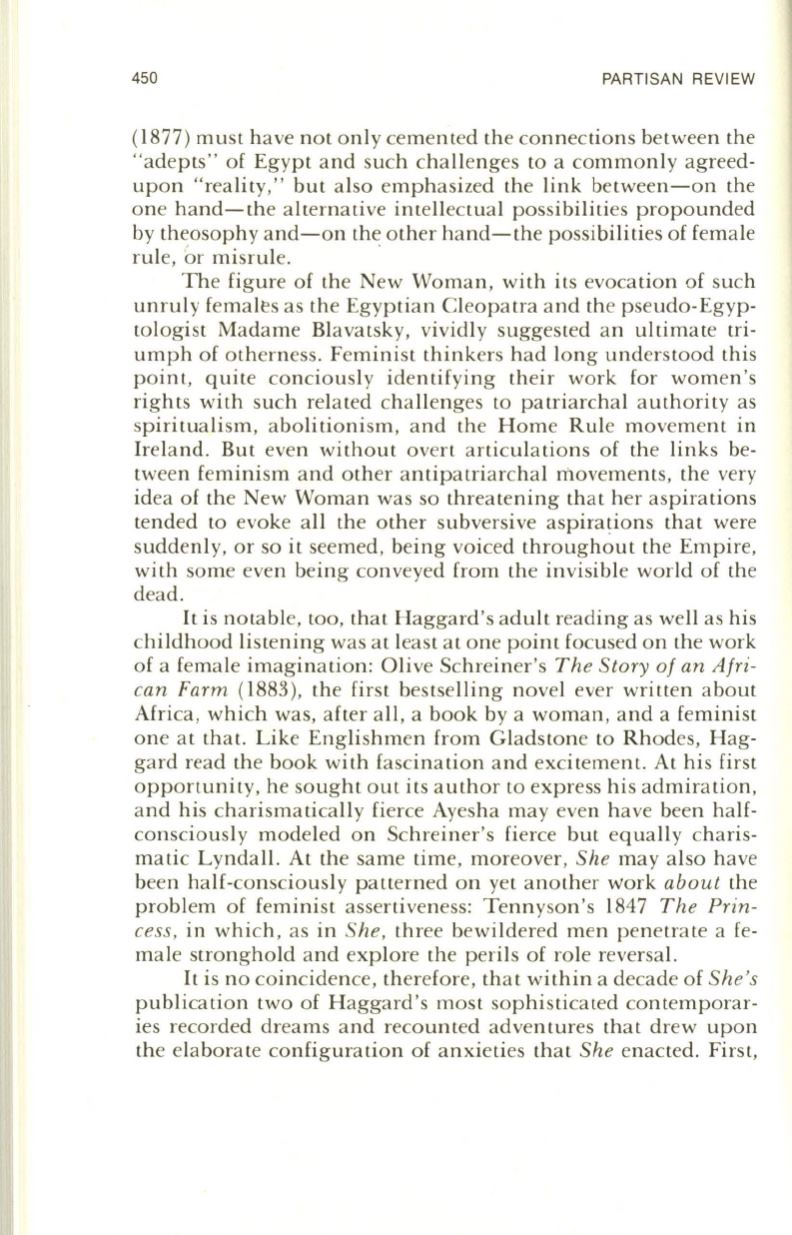
450
PARTISAN REVIEW
(1877) must have not only cemented the connections between the
"adepts" of Egypt and such challenges to a commonly agreed–
upon "reality," but also emphasized the link between-on the
one hand-the alternative intellectual possibilities propounded
by theosophy and-on the other hand-the possibilities of female
rule, or misrule.
.
The figure of the New Woman, with its evocation of such
unruly females as the Egyptian Cleopatra and the pseudo-Egyp–
tologist Madame Blavatsky, vividly suggested an ultimate tri–
umph of otherness. Feminist thinkers had long understood this
point, quite conciously identifying their work for women 's
rights with such related challenges to patriarchal authority as
spiritualism, abolitionism, and the Home Rule movement in
Ireland. But even without overt articulations of the links be–
tween feminism and other anti patriarchal movements, the very
idea of the New Woman was so threatening that her aspirations
tended to evoke all the other subversive aspirations that were
suddenly, or so it seemed, being voiced throughout the Empire,
with some even being conveyed from the invisible world of the
dead.
It
is notable, too, that Haggard's adult reading as well as his
childhood listening was at least at one point focused on the work
of a female imagination: Olive Schreiner's
The Story of an Afri–
can Farm
(1883), the first bestselling novel ever written about
Africa, which was, after all, a book by a woman, and a feminist
one at that. Like Englishmen from Gladstone to Rhodes, Hag–
gard read the book with fascination and excitement. At his first
opportunity, he sought out its author to express his admiration,
and his charismatically fierce Ayesha may even have been half–
consciously modeled on Schreiner's fierce but equally charis–
matic Lyndall. At the same time, moreover,
She
may also have
been half-consciously patterned on yet another work
about
the
problem of feminist assertiveness: Tennyson's 1847
The Prin–
cess,
in which, as in
She,
three bewildered men penetrate a fe–
male stronghold and explore the perils of role reversal.
It
is no coincidence, therefore, that within a decade of
She's
publication two of Haggard's most sophisticated contemporar–
ies recorded dreams and recounted adventures that drew upon
the elaborate configuration of anxieties that
She
enacted. First,


